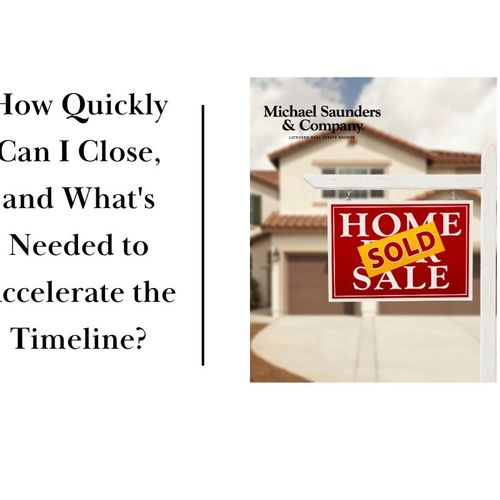Written by The Pope Team | Christine Pope & Paul Pope
If you're preparing to sell your home in Sarasota County, you've likely asked yourself this critical question: "How do I determine an asking price for my house?” Your listing price can make or break your sale. Price it right, and you'll attract serious buyers quickly. Price it wrong, and your home could languish on the market while missing the sweet spot of buyer interest.
Let's dig into the nitty-gritty of pricing strategy using the latest September 2025 market data from Florida Realtors®, so you can make an informed decision.
Where We Are Right Now
The September 2025 data reveals some fascinating trends for Sarasota County:
Single-Family Homes:
- Closed sales: 646 (up 25.9% year-over-year)
- Median price: $450,000 (down 8.2% from $490,000)
- Days on market: 105 days (up 14.1%)
- Inventory: 3,137 homes (up 10.4%)
- Months supply: 4.8 months
Townhouses and Condos:
- Closed sales: 230 (flat, 0.0% change)
- Median price: $315,000 (down 17.1% from $380,000)
- Days on market: 139 days (up 28.7%)
- Inventory: 1,820 units (up 12.6%)
- Months supply: 6.8 months
We're seeing increased sales activity but with more inventory and longer selling times. This isn't the frenzied seller's market of recent years—it's a transitioning market, which makes pricing strategy absolutely critical.
The Three Pricing Strategies
Strategy #1: Price It High and Hope
Some sellers think, "Let's start high. We can always come down later." Here's why this backfires:
The first two weeks your home hits the market are the most critical. That's when buyer interest peaks. With homes sitting for 105 days (single-family) and 139 days (condos), overpriced listings miss this golden window entirely. When you reduce the price after 60 or 90 days, buyers wonder what's wrong with it.
Strategy #2: Price It at "Market Value"
This sounds reasonable, right? The challenge: in a market where median prices dropped 8.2% for single-family homes and 17.1% for condos year-over-year, what exactly is "market value"?
The data shows sellers are receiving 92.2% of list price on single-family homes and just 88.3% on condos. Pricing at perceived "market value" might get you showings, but it won't generate the competitive environment that drives your final price up.
Strategy #3: Strategic Pricing to Win
This is where the magic happens. Strategic pricing means analyzing the data and pricing your home slightly below where comparable sales suggest. When you price competitively from day one, you:
- Generate immediate interest during those critical first weeks
- Create urgency among buyers who recognize value
- Attract multiple showings that can lead to multiple offers
- Potentially receive offers above asking price when buyers compete
The Numbers That Actually Matter
Time on Market Reality
Median time to contract is 64 days for single-family homes (up 33.3%) and 108 days for condos (up 89.5%). Every extra week on the market costs you in carrying costs and reduces buyer confidence.
Price Range Sweet Spots
The data reveals where buyers are most active. For single-family homes:
- $300,000-$399,999: 160 sales (up 40.4%)
- $400,000-$599,999: 178 sales (up 17.1%)
- $600,000-$999,999: 122 sales (up 4.3%)
If your home falls into these ranges, strategic pricing is powerful—you're fishing where the fish are biting.
The Inventory Factor
With inventory up over 10% across both property types, buyers have options. The 4.8 months supply for single-family homes indicates a relatively balanced market, while 6.8 months for condos suggests a slight buyer's market. Your pricing needs to account for this competition.
Your Strategic Pricing Process
Step 1: Analyze Recent Sales – Look at similar homes sold in the last 30-60 days. Pay attention to days on market and percentage of list price received.
Step 2: Understand Active Competition – Your real competition is what's listed right now. How does your home compare in condition, features, and positioning?
Step 3: Factor in Unique Advantages – Recent updates, premium location, or exceptional condition can justify pricing at the higher end of the range—but only if these features add measurable value to today's buyers.
Step 4: Consider Market Velocity – With days on market increasing, buyers are being selective. Your pricing needs to be compelling enough to stop their search and motivate action.
Step 5: Set the Strategic Price – Based on the data, establish a price that attracts maximum attention, generates multiple showings, and positions you to sell within 30-60 days. This often means pricing 2-5% below where the data suggests market value sits.
Common Mistakes to Avoid
Emotional Pricing – Your home is worth what a buyer will pay today, not what you paid or what you need to get out of it.
Ignoring Current Trends – If similar homes are sitting for 100+ days, pricing yours assuming a 30-day sale sets you up for disappointment.
Pricing for Negotiation Room – Adding 5-10% "for negotiation" backfires. You'll price yourself out of initial showings.
The Bottom Line
In today's transitioning market, your listing price is your most powerful marketing tool. Strategic pricing creates conditions for a faster sale, less stress, and potentially a better net result after carrying costs.
Ready to discuss your specific situation? Every home is unique, and your pricing strategy should be too. Contact us today to develop a data-driven pricing strategy for your property.
Data source: Florida Realtors® Monthly Market Detail Report, September 2025, Sarasota County. Statistics compiled from MLS feeds on the 15th day of the following month.
Written by Paul Pope, Realtor with Michael Saunders & Co., serving Sarasota, Lakewood Ranch, and Bradenton, Florida. 941-685-1156 | [email protected]


